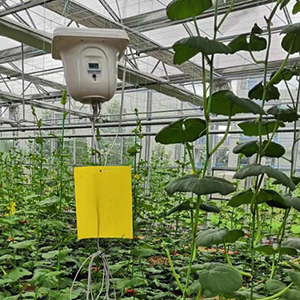Design and experiment of Internet-of-Things cooling system in glass greenhouse based on computational fluid dynamics simulation

Published:25 July 2022
Abstract Views: 2004
PDF: 746
HTML: 38
HTML: 38
Publisher's note
All claims expressed in this article are solely those of the authors and do not necessarily represent those of their affiliated organizations, or those of the publisher, the editors and the reviewers. Any product that may be evaluated in this article or claim that may be made by its manufacturer is not guaranteed or endorsed by the publisher.
All claims expressed in this article are solely those of the authors and do not necessarily represent those of their affiliated organizations, or those of the publisher, the editors and the reviewers. Any product that may be evaluated in this article or claim that may be made by its manufacturer is not guaranteed or endorsed by the publisher.
Similar Articles
- Alessandro D'Emilio, Simona M.C. Porto, Giovanni Cascone, Marco Bella, Marco Gulino, Mitigating heat stress of dairy cows bred in a free-stall barn by sprinkler systems coupled with forced ventilation , Journal of Agricultural Engineering: Vol. 48 No. 4 (2017)
- Gabriella Impallomeni, Francesco Barreca, Agrivoltaic systems towards the European green deal and agricultural policies: a review , Journal of Agricultural Engineering: Vol. 56 No. 1 (2025)
- Alexandros Sotirios Anifantis, Simone Pascuzzi, Giacomo Scarascia-Mugnozza, Geothermal source heat pump performance for a greenhouse heating system: an experimental study , Journal of Agricultural Engineering: Vol. 47 No. 3 (2016)
- Shahad Al-Rikabi, Enrica Santolini, Beatrice Pulvirenti, Marco Bovo, Alberto Barbaresi, Daniele Torreggiani, Patrizia Tassinari, Definition of thermal comfort of crops within naturally ventilated greenhouses , Journal of Agricultural Engineering: Vol. 54 No. 4 (2023)
- Giuliano Vox, Pierfrancesco Losito, Fabio Valente, Rinaldo Consoletti, Giacomo Scarascia-Mugnozza, Evelia Schettini, Cristoforo Marzocca, Francesco Corsi, A wireless telecommunications network for real-time monitoring of greenhouse microclimate , Journal of Agricultural Engineering: Vol. 45 No. 2 (2014)
- Evelia Schettini, Giovanni Puglisi, Fabiana Convertino, Fernando Antonio Cancellara, Giuliano Vox, Greenhouse localized heating powered by a polygeneration system , Journal of Agricultural Engineering: Vol. 52 No. 3 (2021)
- Marzia Quattrone, Giovanna Tomaselli, Lara Riguccio, Patrizia Russo, Assessment of the territorial suitability for the creation of the greenways networks: Methodological application in the Sicilian landscape context , Journal of Agricultural Engineering: Vol. 48 No. 4 (2017)
- Daniele Torreggiani, Alberto Barbaresi, Francesca Dallacasa, Patrizia Tassinari, Effects of different architectural solutions on the thermal behaviour in an unconditioned rural building. The case of an Italian winery , Journal of Agricultural Engineering: Vol. 49 No. 1 (2018)
- Simona M.C. Porto, Alessandro D'Emilio, Giovanni Cascone, On the influence of the alternation of two different cooling systems on dairy cow daily activities , Journal of Agricultural Engineering: Vol. 48 No. 1 (2017)
- Valentina Giovenzana, Stefano Baroffio, Roberto Beghi, Andrea Casson, Alessia Pampuri, Alessio Tugnolo, Diego De Filippi, Riccardo Guidetti, Technological innovation in the winery addressing oenology 4.0: testing of an automated system for the alcoholic fermentation management , Journal of Agricultural Engineering: Vol. 52 No. 4 (2021)
You may also start an advanced similarity search for this article.

 https://doi.org/10.4081/jae.2023.1384
https://doi.org/10.4081/jae.2023.1384 











